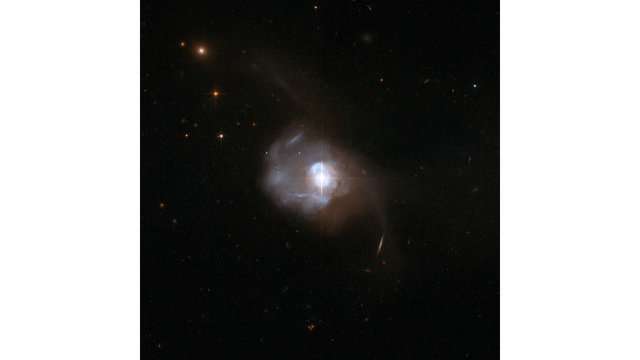Ionized molecules trace galactic outflows

There is a process at work in most galaxies that affects both the central black hole mass as well as the galaxy's global velocity structure and luminosity. Astronomers suspect that feedback of some kind is involved, and one popular mechanism is outflowing gas. The outflow would deplete a galaxy of the raw material needed both for making new stars and for enhancing the black hole's mass.
The first evidence for molecular outflows was discovered by an infrared satellite about twenty years ago: the molecule OH showed outflowing motions of thousands of kilometers a second in its far infrared emission lines. The Herschel Space Observatory recently followed up those detections in great detail, finding that in some extreme cases powerful outflows carry over a thousand solar-masses per year and have the power of a hundred billion Suns - a few percent of the total luminous energy of the galaxy.
CfA astronomers Eduardo Gonzalez-Alfonso, Matt Ashby, and Howard Smith have now discovered that the ionized molecule OH+ traces hot gas in these outflows and also (probably) from the torus of material thought to ring the black hole. The scientists led a team that reduced and modeled three far infrared lines of OH+ and one of the ionized water molecule H2O+ in the galaxy Markarian 231. The lines confirm much of the diagnostics from the neutral molecular gas analyses; the most curious result, however, was the huge abundance of the ionized material, nearly 10% of the neutral gas.
The scientists are unable to explain the presence of so much ionized material either with hot, ultraviolet-emitting stars or with X-rays – it requires ten thousand times the excitation that is present in the Milky Way galaxy. They argue instead that cosmic rays are responsible, energized by repeated acceleration in shock fronts from star formation or similar processes. One additional implication is that strong shocks must be active in the galaxy and should have be responsible for other observable phenomena like the heating of other gas.
More information: Outflowing OH+ in Markarian 231: the ionization rate of the molecular gas. lanl.arxiv.org/abs/1803.04690
Provided by Harvard-Smithsonian Center for Astrophysics




















